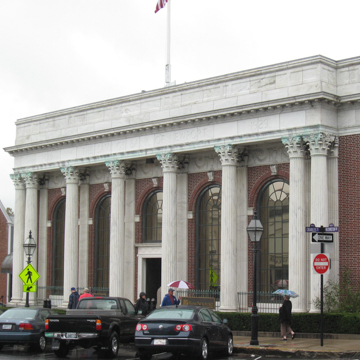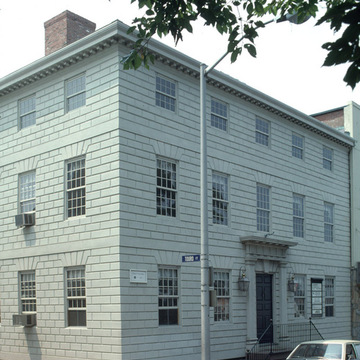Worth a glance on Washington Square are (along the north, or to the right looking out from the Colony House) number 8, the John Rathburn–George Gardner–Abraham Rodrigues Rivera House (c. 1722, altered c. 1740 and c. 1950), an older house modernized, like the Wanton-Lyman-Hazard House (see above), in the mid-eighteenth century. It became the Newport Bank in 1804. Next door, at number 10, is its continuation, the Bank of Newport (1929), a good example of a Beaux-Arts alternation of colonnade and arch to make a banking room. On the left (south side of the square), at number 29 Touro Street, is the Peter Buliod House (c. 1755), one of several Newport houses with a rusticated wooden front. In 1795 it housed the Rhode Island Bank, the oldest in Newport, before Commodore Oliver Hazard Perry bought it in 1818. Number 39, the Joseph Rogers House (
You are here
Washington Square
If SAH Archipedia has been useful to you, please consider supporting it.
SAH Archipedia tells the story of the United States through its buildings, landscapes, and cities. This freely available resource empowers the public with authoritative knowledge that deepens their understanding and appreciation of the built environment. But the Society of Architectural Historians, which created SAH Archipedia with University of Virginia Press, needs your support to maintain the high-caliber research, writing, photography, cartography, editing, design, and programming that make SAH Archipedia a trusted online resource available to all who value the history of place, heritage tourism, and learning.



















